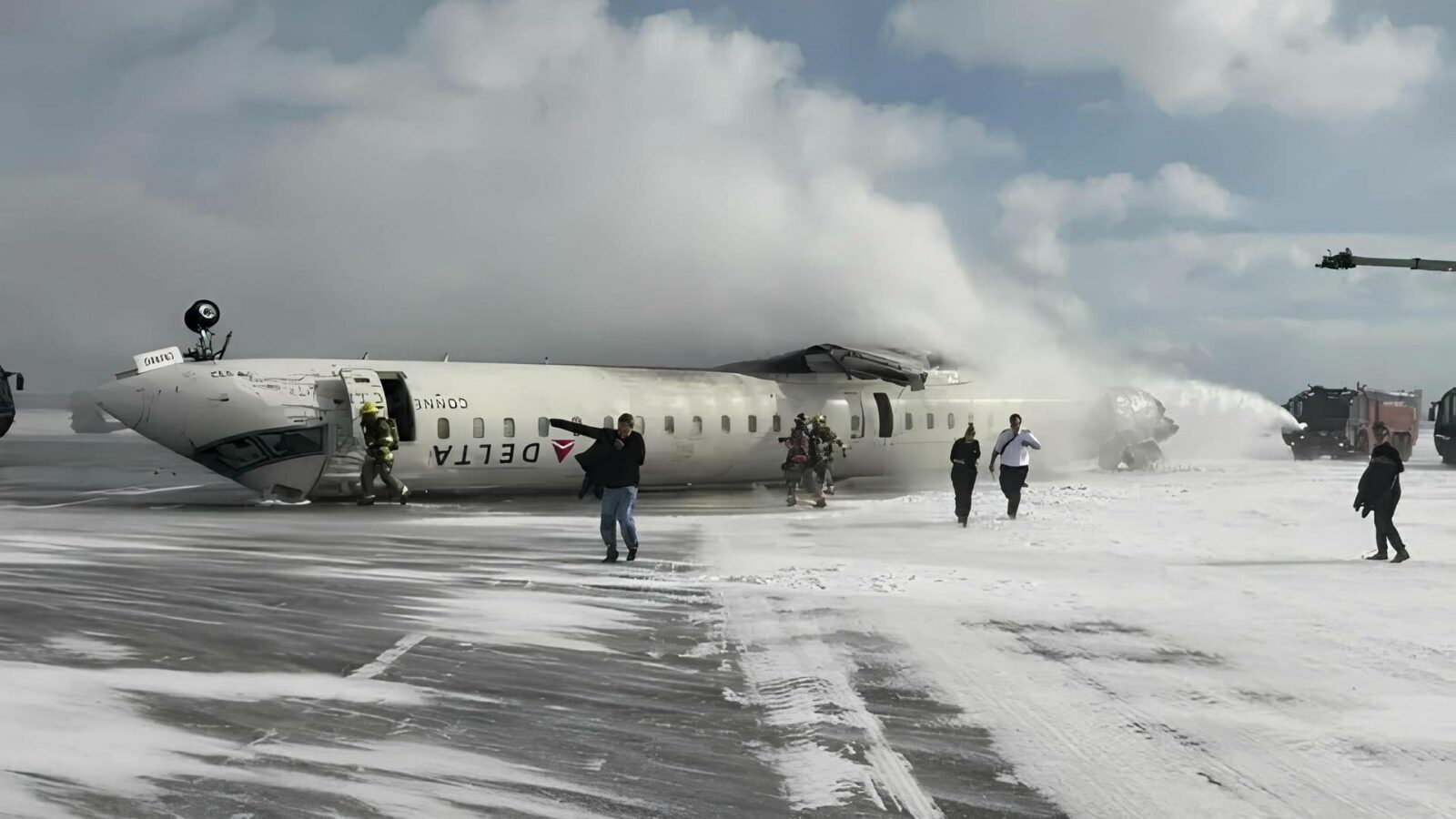The burst tyre of an Air Canada 767 caused an engine failure during rotation. The incident’s cause brought memories of the Concorde crash.
This isn’t a new incident, as some readers may have picked up from the description above. Other than a converted freighter it picked up recently, Air Canada doesn’t operate 767s anymore. The incident happened on the 3rd of February, 2020, and authorities released the final report recently. It involves flight AC-837, from Madrid (LEMD) in Spain, to Toronto Pearson (CYYZ) in Canada.
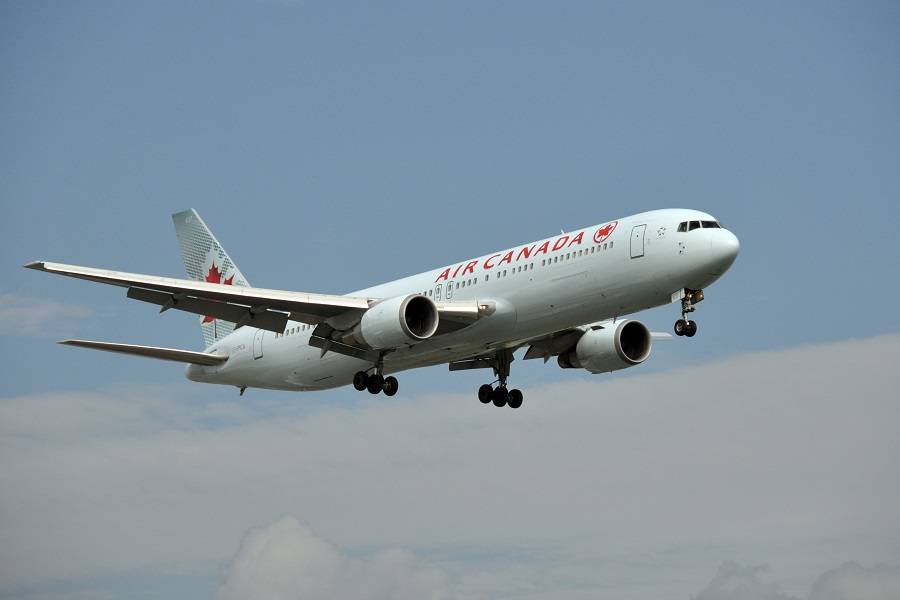
The incident happened on takeoff. The Air Canada 767 crew had just started their rotation when a main gear tyre burst, with pieces of it making it into the left engine. Like most aircraft, the 767’s main gear is some way behind the engines. But the tyre, the left-rear tyre of the left bogie, exploded with enough energy to send pieces forward.
Burst Tyre And One Good Engine
The flight had 130 passengers, 6 cabin crew and two pilots on board. The nose wheel came off the ground two seconds after the tyre burst, and about one second after the engine had its first compressor stall. Aware of the engine problem, the crew continued their takeoff. They soon smelled burnt rubber. This made them suspect a tyre issue, possibly a landing gear fire. So they didn’t attempt to retract the gear immediately – and later found that they couldn’t do so normally.
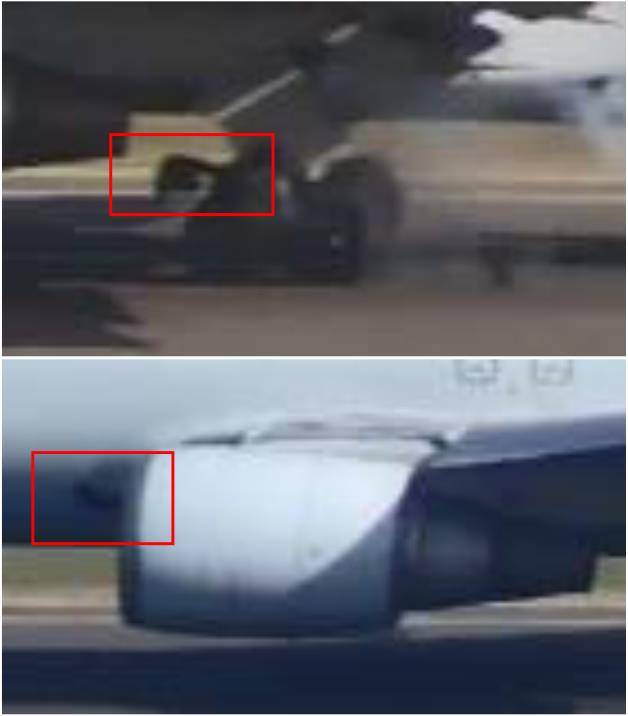
Eventually, the crew managed to retract the gear, and climbed, initially to 5,000 feet. Now fully aware of the effects of their burst tyre and engine woes, the crew had to burn fuel. The pilots informed ATC that they would need three more hours, to do so. In coordination with ATC, they climbed to 8,000 feet and moved to a different position.
Later, the aircraft moved again, this time to the south. This was so that it could rendezvous with an EF-18A (Spanish designation of the F/A-18A) of the Spanish Air Force. The pilot of this (single-seat) aircraft inspected the burst tyre, the engine and the rest of the 767, in detail. The military pilot even took pictures.
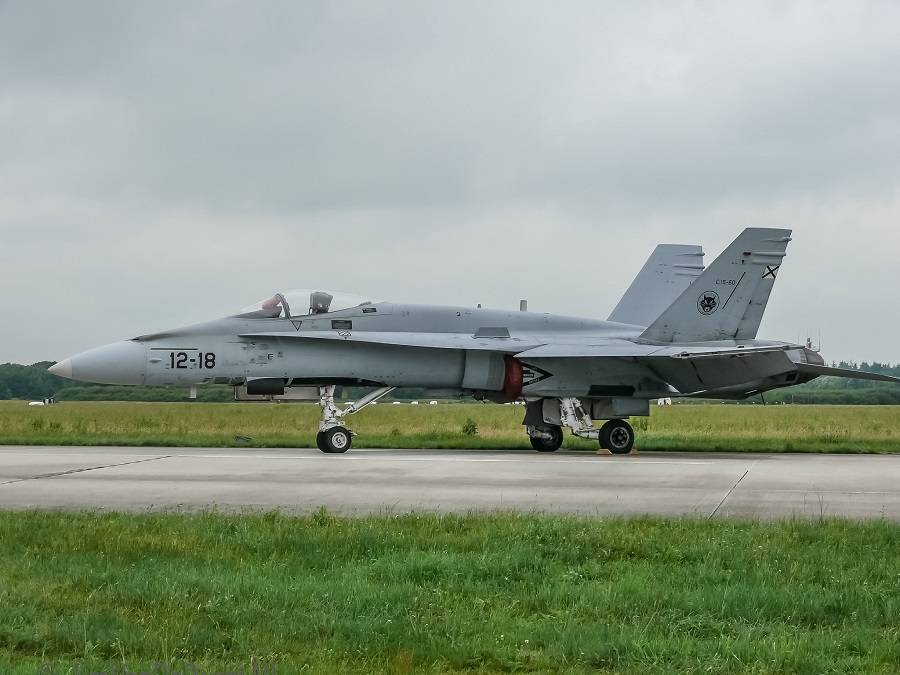
Eventually, the aircraft landed on Madrid’s longest runway (32L) just over four hours after departure. Landing on one engine, the burst tyre meant that the remaining three tyres on that side got hot. Fire crews cooled down the brakes, by using fans. An hour later, the 767 taxied under its own power and reached the terminal, where the passengers disembarked. There were no injuries.
The Offending Object?
The investigation concluded that the cause of this incident was a sharp foreign object. This object was approximately 1.5 mm (0.06”) wide, and 70 mm (2.76”) long. This caused the tyre to burst explosively, with pieces of its carcass launched forward and into the engine. The manner of the tyre explosion seems to preclude any other causes, like a low-pressure condition.
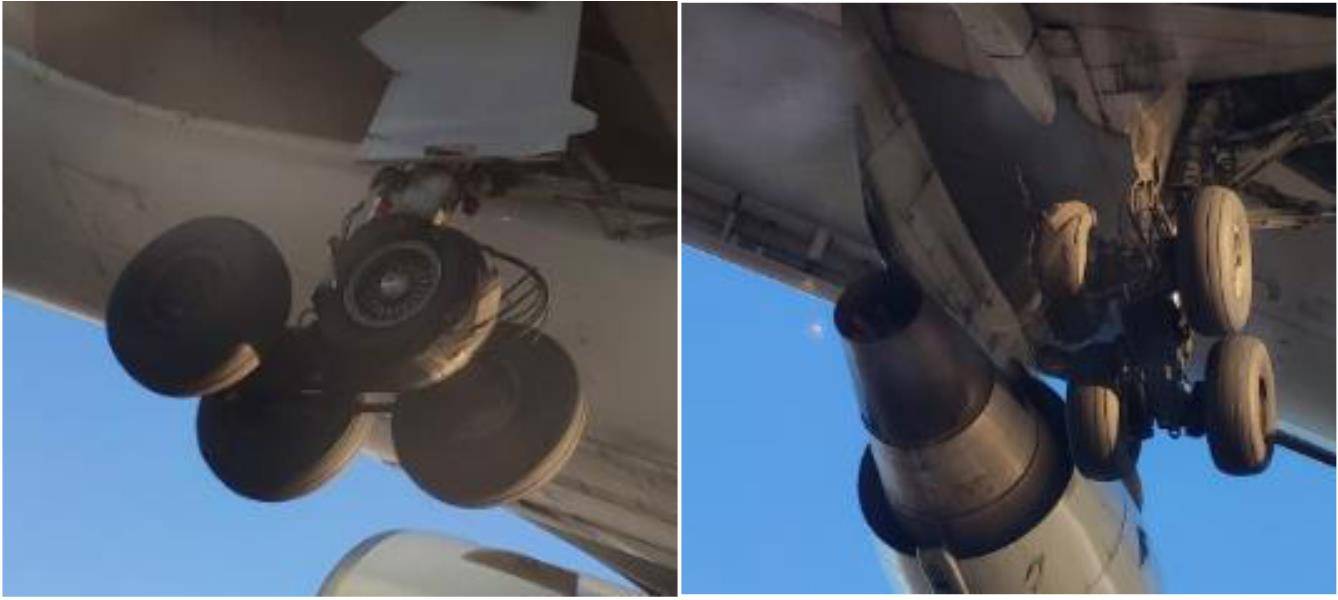
Aside from the engine, another effect of the burst tyre was minor damage to the landing gear tilt sensor. What this meant was that the crew could not retract the gear immediately after takeoff. This was important, as the flight crew initially struggled to gain altitude on one engine. They retracted the gear using the alternative landing gear actuation procedure.
Finally, the investigation showed that three other aircraft had used the runway, since the previous runway inspection. All three made longer takeoff runs than the 767. But the investigation could not determine if the object causing the burst tyre and the failed engine came from one of these jets, or if it was on the runway beforehand.
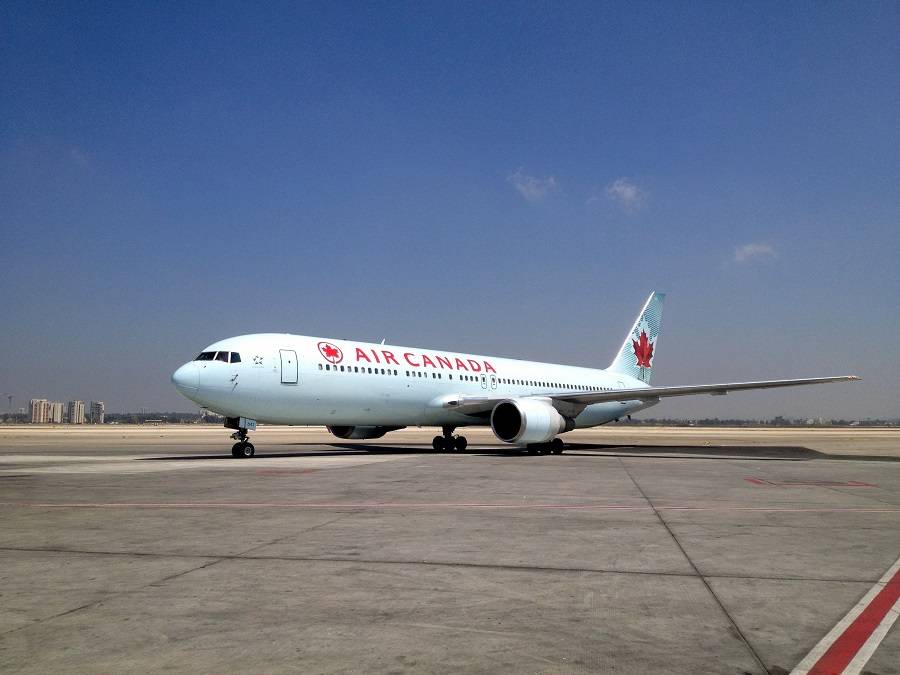
The investigation praised the calm and collected manner of the pilots, but also the cabin crew. It recommended that authorities at Madrid find ways to improve their detection of foreign debris on the runway. Also, that a runway inspection must be carried out after reports of a tyre explosion. And finally, it recommended that authorities use this incident as a reference in their training and planning.



